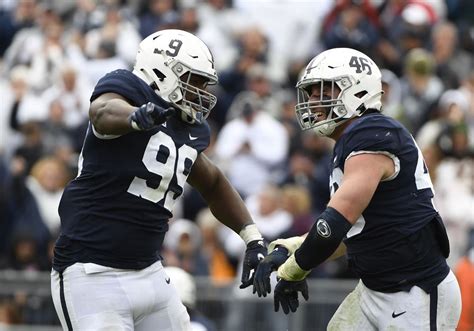The NCAA football playoff rankings play a critical role in determining which teams will compete for the national championship, with each season bringing its unique challenges and surprises. As this season unfolds, the playoff landscape is shaped by a variety of factors, including team performance, head-to-head matchups, and strength of schedule. In this article, we dive into the key elements driving the current standings, exploring the most influential games, standout player performances, and coaching strategies. We’ll also analyze how this season’s rankings compare to previous years and offer predictions on what to expect as the playoffs approach.
xishoot.xyz will take you through an extensive exploration of this topic.
2. Current Season’s Rankings Overview
This year’s NCAA football playoff rankings have been a battleground of intense competition, with numerous teams vying for the coveted top four spots. As the latest rankings stand, traditional powerhouses like Alabama, Georgia, and Ohio State are currently at the forefront. However, upsets have emerged from teams like Michigan and Oregon, whose impressive performances have propelled them into contention. The competition for playoff positions is fierce, with teams closely matched in crucial metrics like strength of schedule and head-to-head outcomes.
This season, a notable shift towards defensive dominance is evident, with many top-ranked teams excelling at stopping their opponents. Furthermore, the impact of conference championships is anticipated to significantly influence the final rankings. Notably, teams from the SEC and Big Ten are competing fiercely for supremacy. As the regular season unfolds, each game holds significant weight in determining the final playoff standings. With several key matchups on the horizon, the rankings remain highly unsettled.

3. Key Criteria for Rankings
The NCAA playoff rankings are determined by a selection committee that evaluates teams based on several key criteria. A crucial factor is the strength of schedule, which gauges the difficulty of a team’s opponents throughout the season. Teams that face and conquer higher-ranked opponents tend to climb the rankings.
Direct comparisons between competing teams, known as head-to-head matchups, are vital. Conference championships, especially for teams in major conferences like the SEC, Big Ten, and ACC, are particularly significant. A conference title win often bolsters a team’s chances of making the playoffs.
Beyond individual player accolades, the committee considers the team’s overall performance, including margin of victory and consistency throughout the season. The impact of injuries to key players is also factored in, as these can significantly affect a team’s ability to reach its full potential. Ultimately, the committee aims to select the four teams that have exhibited the highest level of performance and possess the strongest overall resumes. This comprehensive evaluation ensures a fair and accurate ranking of each team’s season-long achievements.

4. Influential Games and Matchups
This season has featured several high-stakes games with major implications for the NCAA playoff rankings. One of the most impactful matchups was between Alabama and Georgia, two dominant programs competing for SEC supremacy. The result not only affected their own rankings but also significantly impacted the broader playoff picture, as both teams are consistently ranked among the top contenders for a playoff spot.
Other key games include Ohio State’s victory over Michigan, a contest with significant implications for both the Big Ten championship and playoff contention. Furthermore, unforeseen upsets, such as Oregon’s defeat of a superior opponent, have disrupted the rankings, creating opportunities for other teams to ascend.
Closely contested games, frequently decided by a narrow margin, highlight the significance of direct matchups and late-season form. Teams that prevail in these crucial moments enhance their chances of securing a playoff spot. As the season unfolds, the weight of these encounters intensifies, playing a pivotal role in shaping the ultimate playoff standings.
5. Team Performance Analysis
Team performance is a cornerstone of the NCAA playoff rankings, and this season has showcased a number of exceptional programs. Alabama, with its powerful offense fueled by explosive playmakers and a defense that consistently shuts down opponents, continues to assert its dominance. Meanwhile, Georgia has cemented its playoff candidacy with a stifling defense that limits both points and yardage while maintaining a solid offensive approach.
Ohio State’s high-scoring offense, spearheaded by a dynamic quarterback and talented receivers, has been a key to their success. Their offensive firepower has propelled them to the top of the rankings, despite occasional defensive struggles. Meanwhile, Michigan has established itself as a well-rounded team, boasting a potent rushing attack and a disciplined defense that excels at preventing explosive plays.
Oregon’s unexpected rise as a contender has been driven by their resilience in close games and strong performance within their conference. Key victories have significantly boosted their playoff prospects. The team’s consistency, especially in crucial moments, has been their defining characteristic this season. Teams that excel under pressure and maintain a high level of play throughout the year often reap the rewards in the playoff rankings, while inconsistent teams can find themselves paying the price.
6. Impact of Injuries and Player Performance
The NCAA playoff rankings have been heavily influenced by injuries and player performance this season. Key injuries to star players have significantly altered the playoff landscape, impacting both team dynamics and standings. For instance, Alabama’s recent injury to their starting quarterback has raised concerns about their offensive effectiveness, potentially jeopardizing their playoff aspirations. The team’s ability to adapt and perform with a backup quarterback will be crucial in determining their postseason fate.
Georgia has also encountered difficulties with injuries on their defensive line, potentially affecting their ability to sustain their dominant defensive play. The Bulldogs’ playoff aspirations will hinge on their ability to effectively manage these injuries and adapt their defensive strategies accordingly.
Conversely, breakout performances by promising newcomers have revitalized several teams’ postseason aspirations. Ohio State’s new quarterback has been a revelation, elevating the team’s offensive production and cementing their standing in the rankings. Oregon’s surge can be attributed to impressive contributions from key recruits who have surpassed pre-season expectations.
Navigating injuries and maximizing the impact of exceptional player performances is crucial in the fiercely competitive playoff race. Teams that excel at managing these challenges and consistently maintain high-level play are more likely to earn a coveted playoff berth.
7. Coaching Strategies and Changes
Coaching strategies and changes have been instrumental in shaping this season’s NCAA playoff rankings. Successful teams often exhibit innovative and adaptable coaching approaches. For example, Alabama’s head coach has adjusted his offensive strategies to compensate for key injuries, shifting towards a more balanced attack to ensure continued success. Similarly, Georgia’s defensive coordinator has implemented strategic shifts to address injury-related gaps, preserving their formidable defensive prowess.
Coaching staff changes have significantly impacted team performance. Ohio State’s new offensive coordinator has breathed new life into the team’s play-calling, boosting their scoring potential and contributing to their impressive ranking. Conversely, Oregon’s coaching staff has implemented tactical changes that have harnessed their players’ strengths, resulting in unforeseen victories and a surge in their ranking.
Overall, coaching strategies that adapt to current challenges and leverage team strengths are crucial for maintaining and improving playoff positions. Effective adjustments and strategic innovations can be the difference between success and failure in the playoffs.
8. Comparative Analysis with Previous Seasons
A comparison of this year’s NCAA playoff rankings to those of previous seasons reveals significant trends and shifts. While offensive prowess historically dominated the rankings, the current season has seen a greater emphasis on defensive strength. This is exemplified by teams like Georgia, which have excelled in defensive performance. The shift in strategic priorities from offense to defense is a notable change in the landscape of college football.
The landscape of college football is shifting, with mid-tier teams exhibiting increased competitiveness. While traditional powerhouses like Alabama and Ohio State remain formidable, they are encountering greater resistance from rising programs such as Oregon and Michigan. This heightened competition suggests a more balanced playing field and a less predictable playoff race.
Moreover, coaching changes and adjustments have gained significant influence. The successful implementation of new coaching strategies has been crucial in determining team rankings, highlighting a wider trend of adaptability and innovation in the coaching landscape. This season’s dynamics emphasize a more competitive and strategic approach to the game.
9. Controversies and Debates
The NCAA playoff rankings for this season have ignited controversy and debate, mirroring the intricate nature of the selection process. A primary source of contention is the inclusion of teams with less challenging schedules. Critics contend that teams from prestigious conferences, such as Alabama and Georgia, have gained an advantage due to weaker non-conference opponents, leaving deserving teams from smaller conferences, despite their impressive records, excluded. This debate underscores ongoing concerns about the fairness and transparency of the selection criteria.
A further point of contention revolves around the influence of injuries on team rankings. Teams such as Alabama, grappling with substantial injury issues, have witnessed their playoff standing shift. Some advocate for the committee to explicitly factor injuries into its rankings, while others maintain that injuries are an inherent aspect of the sport and should not disproportionately affect rankings.
The debate over conference championships persists. Teams claiming conference titles often receive higher rankings, a factor some consider essential. However, others argue that this system unfairly disadvantages teams in robust conferences, where multiple playoff-worthy teams may exist.
Furthermore, discussions have centered around expanding the playoff format. Proposals seeking to include more teams in the postseason aim to address concerns surrounding fairness and inclusivity. However, these proposals have not yet been implemented. These controversies highlight the ongoing debate about the most effective method for determining the national champion in college football.
10. Projections and Predictions for the Playoffs
With the NCAA football season in full swing, playoff projections are becoming more defined. Current rankings and team performance suggest Alabama, Georgia, and Ohio State are strong contenders for the top four spots. Alabama’s balanced offense and resilient defense, despite recent injuries, make them a formidable force. Georgia’s dominant defense and consistent performance solidify their position as a top-ranked team.
Ohio State’s potent offense and enhanced defense make them a strong contender for a playoff berth. Michigan, with their impressive performance and balanced roster, is also a likely candidate, particularly if they maintain their current form and secure a crucial win.
Oregon’s unexpected surge and standout performances in crucial games have turned them into a team to keep an eye on. Their sustained strong play could potentially upend the strategies of the established top teams.
The playoff field is anticipated to feature a blend of familiar contenders and unexpected dark horses. The final standings will depend on crucial upcoming games and each team’s ability to thrive under pressure. This season’s fierce competition promises a thrilling playoff race, where every game carries immense significance.
As the NCAA playoff race heats up, the blend of standout performances, strategic coaching, and influential games will ultimately determine the final rankings. With debates on fairness and potential playoff expansion ongoing, the path to the championship remains dynamic and unpredictable, promising an exciting conclusion to the season.
xishoot.xyz
